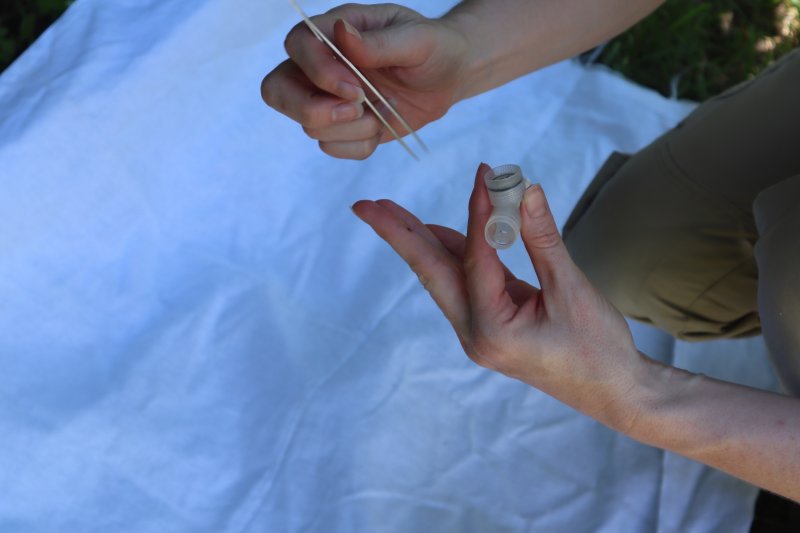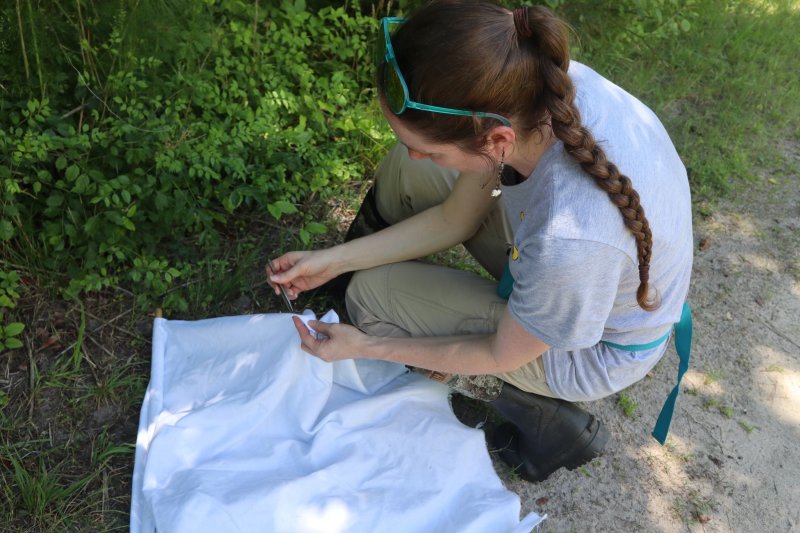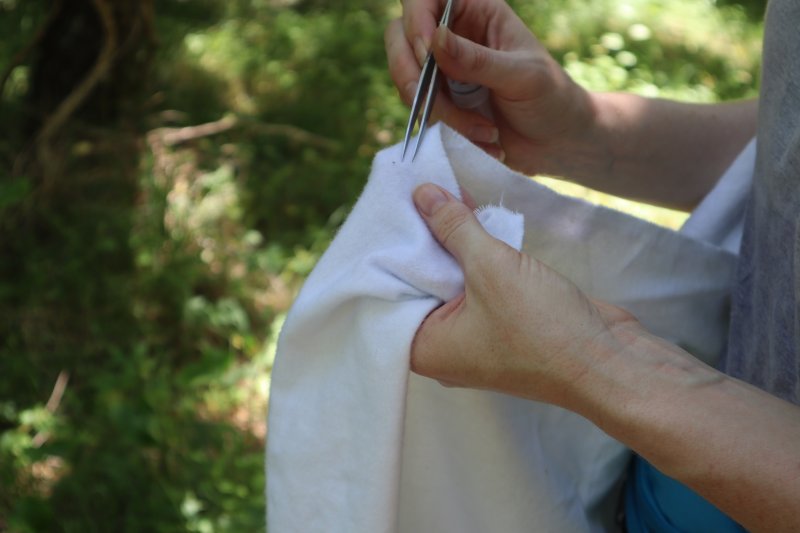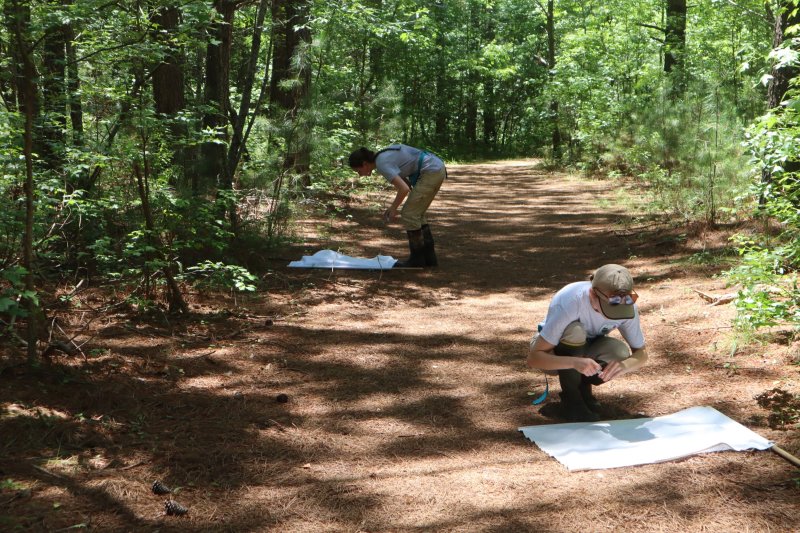State ramping up efforts to control tick population
Delaware is ramping up efforts to monitor and control tick populations as the state continues to report some of the highest Lyme disease rates in the nation, according to the Centers for Disease Control and Prevention.
The Delaware Department of Natural Resources and Environmental Control is leading a comprehensive, year-round surveillance and education initiative, tracking where ticks live, what pathogens they carry and how best to keep communities safe.
DNREC is working in partnership with the Department of Health and Social Services. The two agencies joined forces in the early 2000s, but the partnership expanded in 2014 with the creation of a Lyme Disease Prevention Task Force, which developed a comprehensive strategy for tackling the issue. The final report included seven key recommendations with actionable plans, many building on the earlier initiatives. Following the report, the General Assembly officially expanded the DNREC Mosquito Control Section’s mission to include tick control efforts.
In 2020, Ashley Kennedy eagerly joined the program. She now holds the title of state tick biologist in the Mosquito Control Section of the DNREC Division of Fish and Wildlife.
“I had Lyme disease myself back when I was a kid,” said Kennedy. “It made a big impact on me. I’ve had to deal with arthritis from this tick bite that was so long ago I don’t even remember it. I know a lot of other people out there are suffering because of ticks.”
Through its surveillance program, DNREC identifies when and where different tick species are present, and whether they carry pathogens such as the agent of Lyme disease. The effort also includes evaluating tick control methods, providing consultations for landowners and managers, staying updated on the latest research and promoting public education in partnership with health agencies.
Researchers collect ticks across Delaware using a method called dragging, where a white cloth attached to a wooden pole is pulled over vegetation to catch ticks. Kennedy and colleagues Claire Hancock and Sara Kennedy collected ticks June 18, at Trap Pond State Park in Laurel, Holts Landing State Park in Dagsboro, and Fresh Pond Trail at Delaware Seashore State Park north of Bethany Beach. Kennedy aims to collect ticks at Delaware State Parks at least twice a month.
Once collected, ticks are preserved and classified by species, sex and life stage before being tested for pathogens by students at Delaware Technical Community College. This testing helps identify areas with high prevalence of tick-borne diseases.
“Eventually they make their way to a molecular biology lab at Del Tech Community College,” said Kennedy. “We have a really great collaboration with them where they screen the ticks for pathogens. They are doing some really top-notch quality research.”
Claire Hancock is a recent graduate of Delaware Technical Community College. She was also a part of the tick research project at the school. She’s thoroughly enjoyed her field learning experience with Kennedy so far this summer season.
“I don’t like ticks very much, so being able to capture them and test them and get rid of them is good for public health,” she said. “I’ve only been here a few weeks, but the most interesting part has been the variety of ticks there are. I knew there were different species, but I didn’t realize how many there were.”
To help control ticks in outdoor spaces, remove leaf litter and invasive plants, keep grass trimmed and avoid placing play areas in shaded or wooded spots. Clear trash to reduce rodent activity, which can attract ticks. If using insecticides, follow label directions and consider potential harm to pollinators. Check pets after outdoor time and talk to veternarians about the best tick prevention product options.
“The best advice I have ... is wearing some kind of repellent every day,” said Kennedy. “Especially if it’s using DEET as the active ingredient – that’s highly effective against ticks. When you’re out in nature, just try and stick to the middle of the path and not brush up against the vegetation along the sides, because that is where the ticks are gonna be hiding. Other than that, just doing frequent tick checks every time you’ve been outside.”
For more information, go to dnrec.delaware.gov/fish-wildlife/ticks/management.
It’s peak tick season
June marks the beginning of peak tick season in Delaware.
With warmer weather increasing outdoor activities, the risk of tick bites and tick-borne illnesses rises significantly. According to the latest Delaware Vector-Borne Disease Surveillance Report from the Division of Public Health, 344 cases of Lyme disease, the most common tick-borne disease in Delaware, were reported in the state in 2024. Lyme disease is spread by deer ticks in the Mid-Atlantic region, and symptoms can range from fever and fatigue to severe joint pain and neurological issues if left untreated. In some cases, a rash resembling a bullseye will appear near the site of the bite. Due to an increase in testing reports in the last year, Alpha-gal Syndrome, another tick-borne illness, was made reportable in Delaware beginning December 2024. More than 100 cases of AGS were reported to DPH from June to December 2024.
The most common tick species in Delaware is the lone star tick. While this species does not carry the bacteria that causes Lyme disease, lone star ticks can be infected with bacteria that cause ehrlichiosis. Lone star ticks are also the main species associated with AGS.
Another tick species commonly encountered in Delaware is the American dog tick, which can carry bacteria that cause spotted fever rickettsiosis.
“Earlier this year, the DNREC Tick Program published a study in the Journal of Medical Entomology detailing each tick species that has been reported in Delaware,” said State Tick Biologist Ashley Kennedy of the DNREC Mosquito Control Section. “The last such report was published in 1945, and there have been a lot of changes since then – new tick introductions and new tick-borne pathogens discovered. Now we know that Delaware is home to at least 15 different tick species, possibly as many as 19 species. With all these changes, tick awareness year-round is more important than ever.”


























































